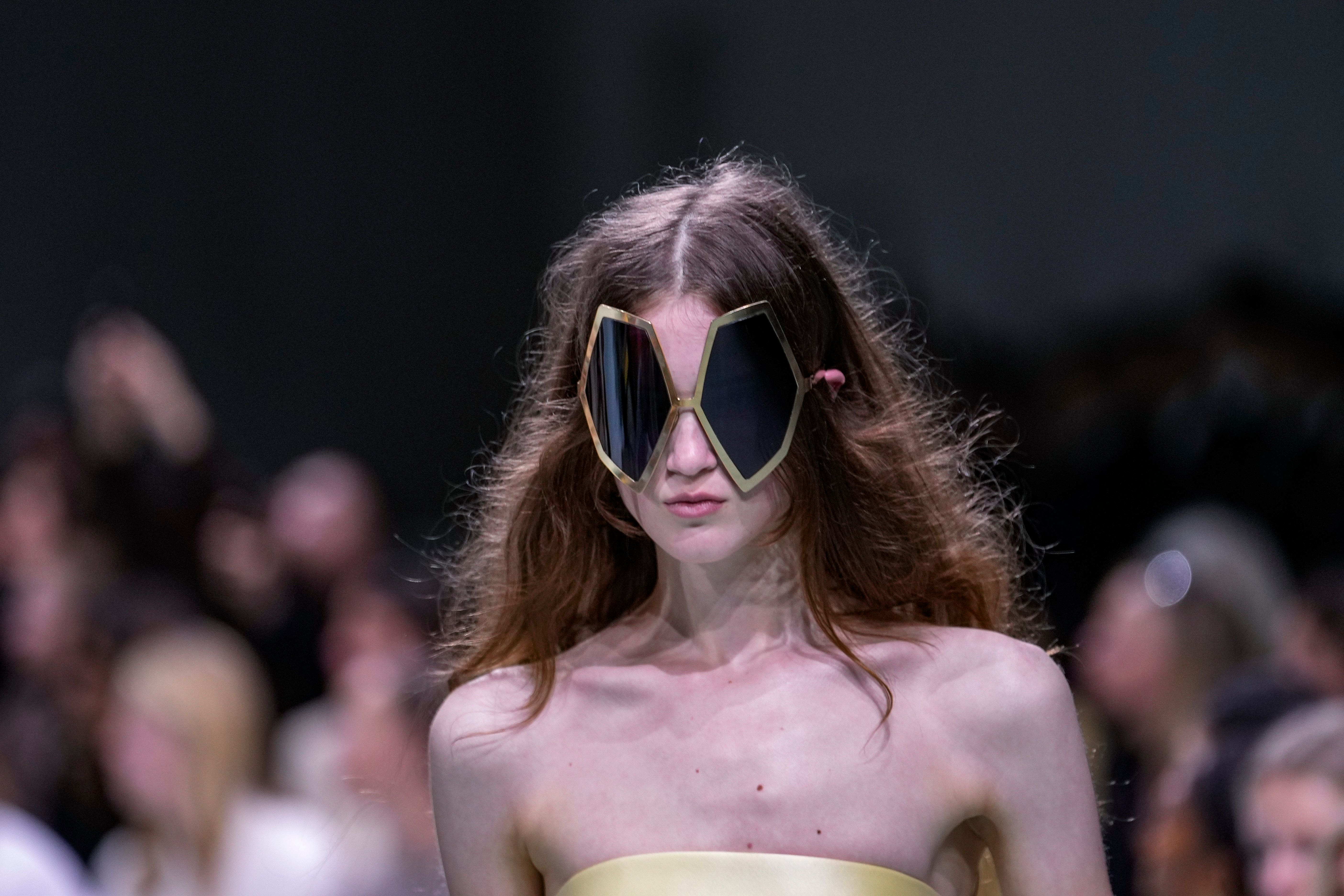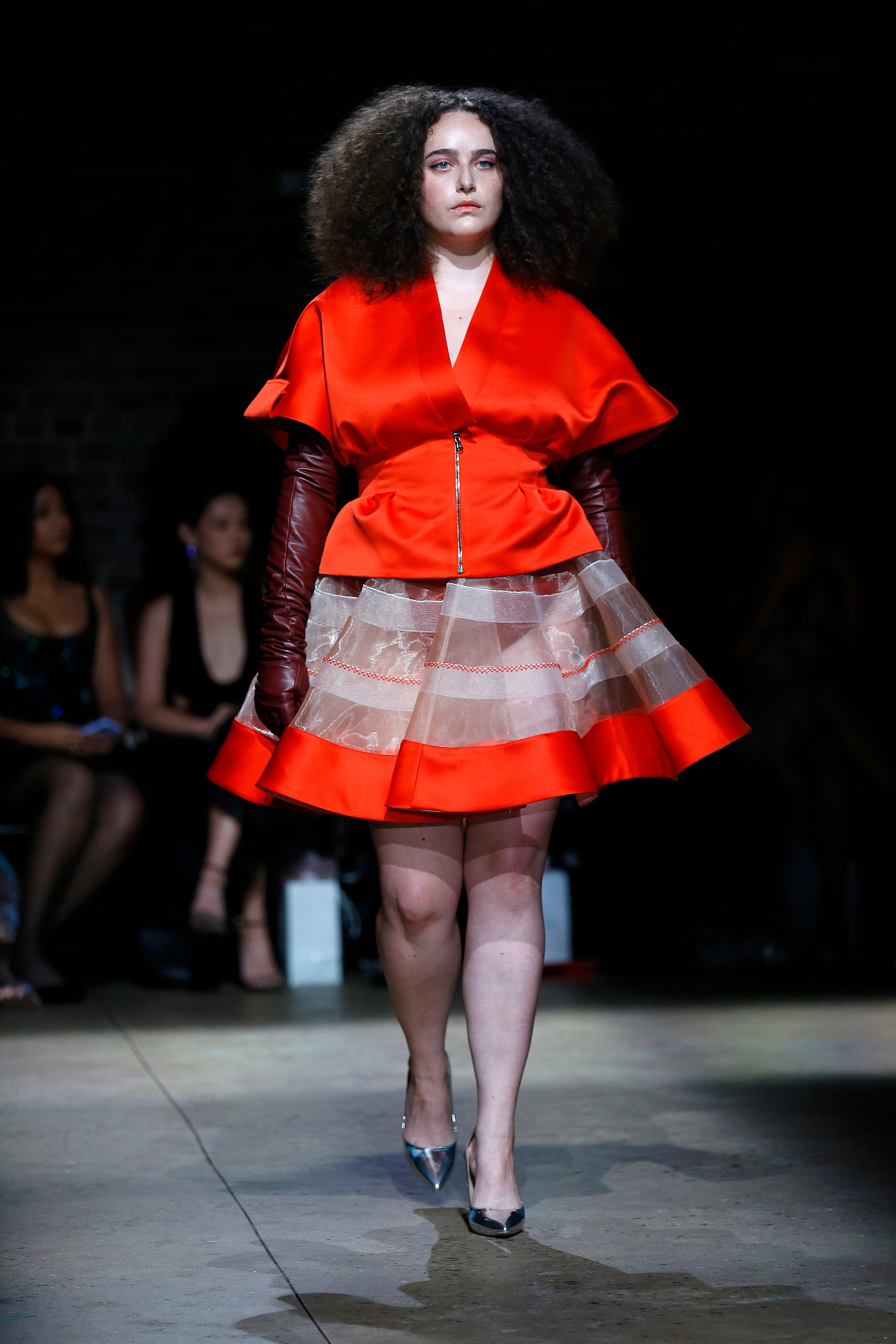Fashion experts point out ‘worrying return’ to ‘extremely thin models’ in new research
‘Vogue Business’ found that 0.8 percent of this season’s looks were plus-size and 94.9 percent were straight-size

Your support helps us to tell the story
From reproductive rights to climate change to Big Tech, The Independent is on the ground when the story is developing. Whether it's investigating the financials of Elon Musk's pro-Trump PAC or producing our latest documentary, 'The A Word', which shines a light on the American women fighting for reproductive rights, we know how important it is to parse out the facts from the messaging.
At such a critical moment in US history, we need reporters on the ground. Your donation allows us to keep sending journalists to speak to both sides of the story.
The Independent is trusted by Americans across the entire political spectrum. And unlike many other quality news outlets, we choose not to lock Americans out of our reporting and analysis with paywalls. We believe quality journalism should be available to everyone, paid for by those who can afford it.
Your support makes all the difference.Fashion experts have expressed concern over the industry’s apparent return to “extremely thin” models after this season’s runway shows.
On October 8, Vogue Business published its annual size inclusivity report following the spring/summer 2025 showcases in New York, London, Milan, and Paris. According to the outlet’s findings, size inclusivity has regressed on the runway despite efforts made in recent years to present more plus-size models in high fashion. This led to the “worrying” conclusion that “extremely thin” models are once again dominating the runways.
“Of the 8,763 looks presented across 208 shows and presentations, 0.8 percent were plus-size (US 14+), 4.3 percent were mid-size (US 6-12) and 94.9 percent were straight-size (US 0-4),” Vogue Business reported.
While mid-size inclusion rose 3.7 percent from last season, plus-size inclusion remained consistent at 0.8 percent.
In Paris, Ester Manas and Rick Owens were the top two brands with the highest percentage of plus-size models featured in their presentations. Meanwhile, Vogue Business recorded Cecillie Bahnsen, Ganni, Coperni, and Miu Miu as the four brands that featured zero plus-size looks.

Vogue Business found nine shows in Milan included “at least one mid-size or plus-size model,” meaning 0.3 percent of all the models were plus-size. Sunnei was reportedly the “most size-inclusive” brand as 33.3 percent of their looks were mid-size.
“In New York, mid-size representation grew from 3.1 percent last season to 5.5 percent this season,” the outlet stated. Still, plus-size representation remained at 0.8 percent. Bach Mai, Willy Chavarria, Rio, and PH5 were the only brands to include a percentage of plus-size representation.

London was “the most size-inclusive,” with up-and-coming talents contesting norms such as Karoline Vitto and Johanna Parv.
The outlet attributed this regression to the popularity surge in weight-loss drugs and Ozempic, a prescription injectable used to treat type 2 diabetes but often prescribed by physicians as an unofficial weight-loss drug.
Last season, The Independent’s Olivia Petter noticed a similar decline in plus-size representation during London Fashion Week. Though she noted considerable diversity at 16Arlington, Harris Reed, and Simone Rocha, most other brands stuck to their rigid measures, casting only straight-sized models.
Petter spoke with model and plus-size activist Felicity Hayward, who uses her “Including the Curve” movement to keep tabs on plus-size representation from New York to Paris.
In 2023, Hayward found London Fashion Week only cast about 71 models out of about 2,640.
“It’s really disheartening to witness a return to a very singular celebration of body types on the catwalk after the last few years of greater inclusivity across the spectrum,” fashion writer and former Vogue editor, Naomi Pike told Petter.
“When I first started going to fashion week, I didn’t see a single body like mine on the runway so I didn’t expect it or relish in seeing it. Now, it feels exclusionary and inexcusable to not include models that sit outside the sample size bracket. For me, it’s like I’m waiting to see my look, what I can or if I can buy anything from this designer. And, when I don’t, it’s extremely disheartening and, often enough, triggering.”
Join our commenting forum
Join thought-provoking conversations, follow other Independent readers and see their replies
Comments